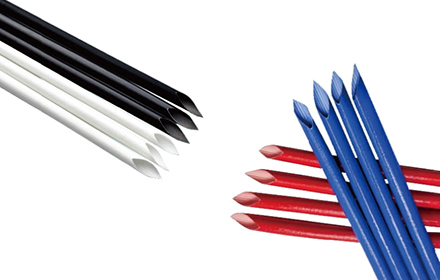Fiberglass Sleeving is a crucial component in various electrical and industrial applications, offering superior protection and insulation for wires and components. Made from high-quality glass fibers, this sleeving is known for its excellent thermal resistance, electrical insulation, durability, and flexibility. This article delves into the features, benefits, applications, and maintenance of fiberglass sleeving.

What is Fiberglass Sleeving?
Fiberglass sleeving is a protective tubular covering made from braided or woven glass fibers. It is designed to insulate and protect electrical wires and components from heat, abrasion, and electrical interference. The sleeving is available in various diameters, thicknesses, and coatings to suit different applications.
Key Features
Thermal Resistance: Fiberglass sleeving can withstand extreme temperatures, typically ranging from -60°C to 550°C. This makes it ideal for use in environments with high heat, such as engine compartments and industrial machinery.
Electrical Insulation: The material provides excellent dielectric strength, ensuring effective insulation for electrical wires and components, which helps prevent shorts and electrical fires.
Durability: Fiberglass sleeving is resistant to abrasion, chemicals, and moisture, which means it maintains its integrity even in harsh conditions.
Flexibility: It is highly flexible and can be easily installed over irregular shapes and surfaces, providing comprehensive protection without compromising functionality.
Benefits
Enhanced Safety: By protecting wires and cables from heat and electrical interference, fiberglass sleeving reduces the risk of electrical hazards.
Versatility: Suitable for a wide range of applications, including automotive, aerospace, electrical, and industrial sectors, making it a versatile protective solution.
Ease of Installation: The flexibility of fiberglass sleeving allows for easy installation and handling, even in tight spaces or around complex shapes.
Cost-Effective: Offers long-lasting protection, reducing the need for frequent replacements and maintenance, which translates into cost savings over time.
Applications
Fiberglass sleeving is used in various industries for different purposes:
Electrical Wiring: It insulates and protects electrical wires and cables in motors, transformers, and generators, ensuring safe operation and longevity.
Automotive: Provides heat protection for wiring and hoses in engine compartments, preventing damage from high temperatures.
Aerospace: Insulates wiring and components in aircraft, where it must withstand extreme temperatures and harsh environmental conditions.
Industrial Equipment: Protects hoses, pipes, and cables in machinery from heat, chemicals, and abrasion, ensuring reliable operation and reducing downtime.
Maintenance Tips
Regular Inspection: Check the sleeving for any signs of wear, damage, or fraying. Replace any damaged sections promptly to maintain optimal protection.
Proper Installation: Ensure the sleeving is properly installed and secured to prevent slippage and ensure effective insulation and protection.
Cleanliness: Keep the sleeving clean from oil, dirt, and debris to maintain its insulating properties. Wipe it down with a damp cloth if necessary.
Fiberglass sleeving is an essential material for protecting and insulating wires and components in a wide range of applications. Its excellent thermal resistance, electrical insulation, durability, and flexibility make it a preferred choice for both industrial and electrical uses. By providing enhanced safety and reliability, fiberglass sleeving helps ensure the efficient and safe operation of electrical systems and machinery. With proper maintenance, this versatile material can offer long-lasting protection and performance, making it a valuable asset in any application.





 English
English
